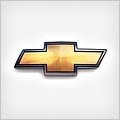
CHEVROLET Corvette Convertible
Generations Timeline, Specs and Pictures
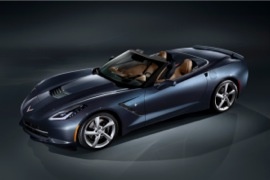
The Stingray Convertible C7 was the last front-engine, open-top Corvette and honored the glorious 1959 Stingray Racer.
Chevrolet unveiled the C7 Stingray at the 2013 Geneva Motor Show in both shapes as a convertible or a coupe with a removable top. The canvas-top version featured a power-operated roof that folded down behind the seats and protected by a tonneau cover.
Its silhouette was easy to recognize. It had the same sharp nose, a long hood, and an aerodynamic greenhouse. In the rear, the short overhang amplified the sport look. Even with the roof-up, the 2013 Stingray C7 looked good. GM made the canvas-top from a three-ply fabric, including sound-absorbing padding and a glass rear window. The carmaker used carbon fiber for the hood to make the vehicle lighter, enhancing the weight distribution.
Inside, there was a significant improvement over the C6, which wasn’t that good on materials quality. The dashboard features a mixed instrument cluster with analog dials and a TFT display which could have been customized to show the information needed by the driver. There was one rotary knob for the drive-mode selector on the central console with a big, round “ESP-off” button in the middle. Another noticeable improvement was the infotainment system that featured an 8” touch-screen display. GM kept the head-up display but with improved functions.
Under the hood, the C7 featured a new, 6.2-liter engine that offered 455 hp and 610 Nm (450 lb-ft) of torque. Chevrolet paired it either with a six-speed automatic transmission or a 7-speed manual. The carmaker upgraded the adaptive dampers with Magnetic ride control and, on the C7, offered more settings than on the C6. It was the last front-engine, rear-wheel-drive Corvette Stingray.

The C6 Corvette roadster was introduced in the fall of 2004 and it was well received by the market.
It was considered more of a roadster than a classical convertible. It was a mix of old and new technology.
Even if the C6 was not 100% new, an important difference was on the headlights. The front headlights deleted the traditional “pop-up” headlights, for the first time since 1963, since the second generation was launched. The bodywork was made out of fiberglass.
The 2005 Corvette featured an optional power-operated soft top. An easy-to-operate manual top remained standard. Both configurations use a five-layer fabric that conceals the underlying structure for a good top-up appearance, plus it helps preserve the car’s aerodynamics and reduces road noise.
The interior was covered in plastic and leather of higher quality compared to the previous C5 Corvette. An infotainment system with a 6.5” touchscreen was placed on the center console, tilted toward the driver. A head-up display showed the driver information about speed, revs and lateral acceleration.
Under the hood, there was a new LS2 engine that featured a 6.0-liter displacement and offered 400 hp. It was mated either with a 6-speed manual or a 4-speed automatic. For the suspension, it still had leaf-springs in the back but featured magneto-rheological dampers able to detect road surfaces and adjust the damping rates to those surfaces for better ride control.
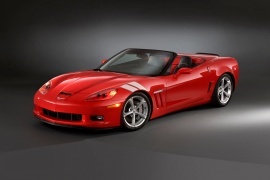
By the time someone will spell this roadster’s complete name, the car already hit the 60 mph (97 kph) barrier.
It was that quick—the Chevrolet Corvette Convertible Grand Sport.
Take anyone involved in the motoring industry and ask which is the fastest American sports car, and 9 out of ten would say Corvette. The other one would say the Chevrolet Corvette. While in the beginning, the “Vette” was not the quickest on the drag-strips, later on, it evolved and became a legendary sportscar. It entered in all kind of races against the top of the European supercars. Some times it won, sometimes it lost. But it was there, among the world’s finest.
The 2009 Corvette Convertible Grand Sport featured air-vents at the front wider fenders to extract the wheel-well air. On the rear ones, which were widened as well, the carmaker placed an air-intake to cool the gearbox and the rear brakes. To make a clear statement, the designers put silver badges with the “Grand Sport” lettering on both front fenders.
Inside, the high-bolstered bucket seats were embroiled with the unique model version on the incorporated headrests. Depending on the options, the carmaker installed a new infotainment unit with sat-nav and Bluetooth connectivity. For the vehicles fitted with an automatic transmission, the carmaker installed paddle-shifters behind the steering wheel.
Chevrolet installed a 6.2-liter LS3 V8 engine that provided up to 436 hp with the optional, two-mode exhaust system. In the standard version, it offered six hp less. The carmaker fitted a magnetorheological fluid to enhance the cornering speed to keep the car planted on the road.

The 60th Anniversary model Corvette 427 was the fastest model from the American sports-car model.
It was a model that could embarrass some European sports cars.
There were not too many models on the market to be produced for 60 years. The closest competitor was the Porsche 911. There was no Ferrari or Lamborghini to be produced for such a long time. But the Corvette remained true to its American customers and Chevrolet engineers worked hard to develop something they were proud to have: the 2012 Corvette 427.
For starters, the 427 Convertible was white with a blue top. In the back, there was a small wing, which was a carry-over from the Corvette ZR1. Special badges with the 60th logo were installed on the wheel center caps. The sleek, aerodynamic body of the open-top version of the Corvette 427 featured the same badge on the “waterfall” panels.
Inside, the 60th badge was seen on the steering wheel, embossed on the seats and inside the instrument cluster. The rest of the interior featured a higher attention to detail and carefully crafted leather seats with contrast stitching.
The 427 model was developed with the same engineering team that prepared the Corvette GT1 for the 24h of LeMans race. To reduce its weight, the anniversary model featured a carbon-fiber raised hood, carbon-fiber Z06-style fenders, carbon-fiber floor panels, and carbon-fiber front splitter and rocker panels. The latter was fitted as standard only for the Anniversary Edition, but those were on the options list for the 427. The LS7 (7-liter) engine featured titanium connecting rods and intake valves. The 505 hp engine was mated to a 6-speed manual.

When talking about American sports cars, the Corvette name comes first.
In 2008, the C6 Corvette was offered as a coupe and convertible as well.
While Chevrolet made the Corvette coupe for high-performance driving, the convertible version was designed for leisure driving. But beware, that convertible was not the usual shopping car. It could outpace many other vehicles on the road, but with an enhanced view of the sky.
The long and slim silhouette of the Corvette was always fascinating for car enthusiasts all over the world. It represented one of the quickest and fastest cars for the buck spent. Its lines and the new exposed headlights were a big step forward for its design. At a glance it didn’t look so much different than the C2 Vette (apart from the pop-up headlights). The slim vents behind the front wheels and the four exhaust in the back warned the bystanders that the car could run in a split of a second. The four, round, taillights were as emblematic as those found on a Ferrari.
The interior was fit for two passengers, with enough legroom and a low seating position. The power-roof helped the driver to open or close the top. On the center stack, Chevrolet offered a 6.5” touch-screen display for the infotainment unit. As an option, a Bose sound system was installed. Like its predecessor, it offered a complex, head-up display, which could show various information, including the lateral acceleration.
Under the hood, the 2008 model featured a new, 6.2-liter engine able to provide 430 hp. It was paired with a new 6-speed manual. A 6-speed automatic was on the options list.
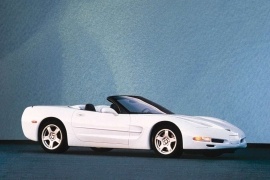
It was the last Corvette with pop-up headlights and it brought the 50-50 weight distribution to the range.
The C5 generation was a big improvement for the well-known American sports-car.
The Corvette, along with the Mustang, was the only American sports-car continuously produced since its first generation, but it appeared a decade before the “Stang” showed to the party. It was constantly improved and survived all the oil crises of the XX-th century.
Sleek, low, and with a stance that couldn’t be mistaken with any other sports-car on the market, the Corvette kept its promise to offer exhilarating performance at a bargain price. There was no other car on the market to sprint as fast as it, and have the same price. The convertible version was offered with a hard-top, which couldn’t be carried along and had to be left in the garage.
Inside, the Corvette didn’t offer the same high-quality materials or fittings. But the low seating position and the high center console were typical for a sports-car.
Due to the new hydroformed chassis, the C5 Convertible was lighter than its predecessor, and it didn’t add too much weight when compared to its coupe sibling. The drivetrain was transaxle with the engine in the front and the gearbox in the back. Unlike its predecessors, the differential was integrated into the gearbox instead and not as a separate unit as before. The LS1, small-block 5.7-liter V8 was upgraded, but it still featured a push-rod configuration, which was considered outdated for most of the European cars. It offered only 345 hp, but due to its high torque at low revs and the light, plastic, bodywork, it could outrun most of the cars on the market. It was offered with either a 6-speed manual or a 4-speed automatic.

The C4 Corvette is known for it’s sleek look.
Instead of using fiberglass on it’s production, the C4 was made from reaction injected molding plastics. The C4 convertible was the first Corvette that had a glass hatchback (except for the 1982 collector edition ) for better storage package. The C4 also had new brakes with aluminum calipers, it came standard with electronic dashboard with digital liquid crystal displays for speed and RPM. The engineers completely redesigned the C4 putting the mark on handling and aerodynamics, but making a compromise on the stiffness of the ride.

Chevrolet impressed the audience with the Corvette concept car shown at the 1953 Motorama event held at Waldorf-Astoria and decided to produce the roadster.
Those who rushed in buying the Corvettes in 1953 and 1954 were not happy with the car’s performance, and GM pushed the engineering department to deliver a better car, which appeared in 1955 as the Corvette C1. It was finally the desired car with the right look and a punchy V-8 under the hood; it was the C1.
Chevrolet tried to sell the car as a sport vehicle, ready to take on the Mercedes-Benz SL300 and master the market of personal coupes. Stylewise, GM made a mistake by adding the “rocket-type” turn signals in the back, but the front side was good. It featured round headlights and a broad grille that spread lower than the headlamps. A fangs-type bumper with chromed elements increased the car’s aggressive look. A hard-top with rear side and back windows was on the options list for the winter season. The fiberglass bodywork was new territory for GM.
Inside, the C1 offered room for two and a low-profile windshield. Considering the average height of the people in the ’50s, it was barely adequate for them, and the same went with the rest of the interior. Apart from the big steering wheel that almost touched the door panel, the rest of the switches were small. Even the gear-stick was small. When retracted, a fiberglass panel covered the canvas-roof, which led to a purebred roadster’s image.
Until the second generation, the Corvette featured an axle suspension in the rear, which was unpleasant. GM produced only 700 units per year to keep the car’s price high, and they were all sold very fast. The most legendary American sports car was born.
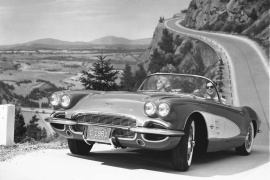
Chuck Berry was on the top of the charts with its “Sweet Little Sixteen” song when Chevrolet introduced the 1958 Corvette Convertible.
It was the car that matched the song’s rhythm.
Let’s face it, the Corvette was not very successful at those times and GM was ready to ax it from the assembly lines after just three years since it was introduced to the market. But finally, someone from the high-tower listened to the marketing department and understood that in an era of chromed details and quad headlights, it was suicidal to do something else. The design department refreshed the car’s look, and after a slow start, the sales started to rocket.
While the carmaker was not very generous with chromed details on the 1953 model, it paid its dues with the ‘58 model that featured bigger bumpers, a taller grille, and additional chromed details on the extracting vent from the front fenders and shiny rings around the quad headlights.
Inside, there was not something really to impress, but at least there was more chrome for the two-seat sports car. Worth mentioning that the C1 was never considered a muscle-car. It was more of a personal luxury sedan, and that made it a competitor for the Mustang, who was far more successful than the bow-tie brand roadster.
Chevrolet offered a 4.0-liter (283 cu-in) V-8 engine fed either by two or twin carburetors under the hood. Moreover, a fuel-injection system was on the options list.

Chevrolet unveiled the Corvette concept car in 1953 at the Motorama event, which took place at the Waldorf-Astoria Hotel, and the public’s reactions convinced GM to build the car.
The expectations were high for both customers and the bow-tie brand. But as soon as the buyers had their hands on the wheel, they started to complain. It was not a cheap car, but it surely looked sportier than it ran.
Chevrolet thought that the C1 could be a Mercedes-Benz SL300 killer, but it was behind the German sports car. Moreover, adding the “rocket-type” turn signals in the back was more of a family-sedan thing than a sports car look. At least, the front was adequate for those times when the regulations stated that all vehicles had to wear round headlights. Harley Earl designed the original prototype inspired by European sports cars, but the back was part of the American culture. Europeans didn’t have those taillights designs.
Inside, the C1 offered room for two and a low-profile windshield. Considering the average height of the people in the ’50s, it was barely adequate for them, and the same went with the rest of the interior. Apart from the big steering wheel that almost touched the door panel, the rest of the switches were small. Even the gear-stick was small. When retracted, a fiberglass panel covered the canvas roof, which led to a purebred roadster’s image.
The car’s chassis was better than most of GM’s products, and most of Corvette’s C1 buyers considered it a good vehicle, but not a sports car. The combination of an inline-six with a three-speed automatic led to unsatisfactory performance results. But it was an excellent cruiser, especially with the top down.























































